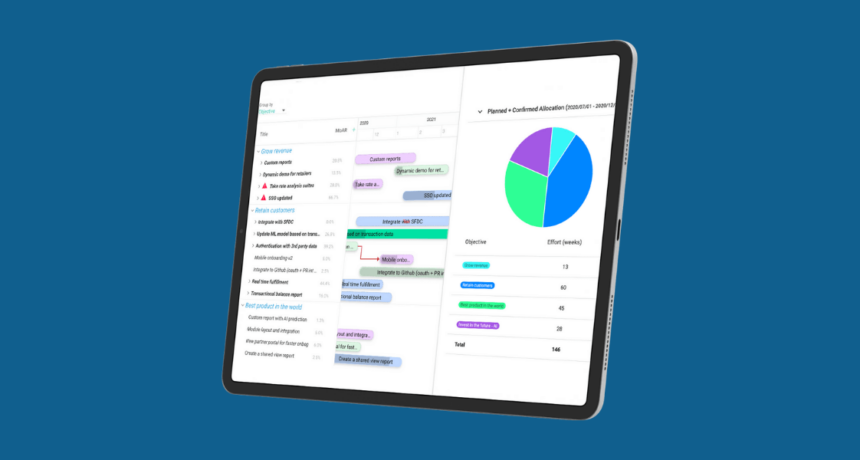A dedicated scrum master is essential for new Agile teams. They are the glue that holds everyone together, ensuring that members adhere to best practices and agreed processes. Much like glue, it will take some time to set. Once everyone understands the makings of a good scrum – from planning to tracking – they are on their way to becoming a well-oiled, self-organizing team.
At this point, the scrum master will no longer require a full-time role because everything works for the most part. So now what? Now, is the time for an up-leveling because
Enabling an Agile engineering team is just the start of an Agile company.
Agile execution via scrum helps build quickly and iteratively. However, it does not automatically enable higher-level alignment of our strategies towards our goals (OKRs). Additionally, it does not enable cross-team cross roadmap collaboration to build synergies or iron out dependencies.
To unlock greater agility, companies need to also practice responsive portfolio program management. Responsive PPM dynamically connects objectives, initiatives, and resources with Agile execution. It also calls for people with the right skills to help move the organization forward.
The Responsive Version of Program and Portfolio Management
Traditional program management focuses on large, cross-functional, and complex programs with many projects. Moreover, the traditional portfolio management focuses on planning, budgeting, and tracking a suite of programs. Both are mostly practiced in large organizations with complex structures.
In small to mid-sized companies, your entire product roadmap is a portfolio.
Many fast-moving companies today may have only a few, if any, large programs. However, they usually have many smaller moving pieces carried out by one or more agile teams. As the agile teams are continuously iterating on product enhancements, there is a missing “glue” to connect them together. This is a recipe for chaos. Promised features go undelivered, support teams are left in the dark, and everyone is sending urgent feature requests filling up the roadmap pipeline.
Solving this takes portfolio management skills.
What Portfolio Program Managers Do
In a nutshell, portfolio program managers ensure the best-desired outcome for an organization over a relevant time period, within the constraints of resources. Scrum master leads scrum cadences while portfolio program managers lead quarterly (or month/ bi-monthly) portfolio roadmap cadence. Their duties can be summed into three key areas:
- Quarterly Strategic Planning for Portfolio Allocation
- Roadmap Delivery and Trade-Off
- Progress Communication
A portfolio program manager works with key stakeholders to create a clear and holistic process for defining priorities responsive to the time-frame. They also lead trade-off discussions between the product areas or teams using portfolio principles to allocate the right resources towards various objectives and initiatives.
Lastly, after deciding the product features and initiatives to undertake, they transition delivery to the agile teams knowing the key-elements of the plan are in place for the team to execute.
Then they track the progress and outcomes, and keep the stakeholders informed.
When changes inevitably happen – for example, when a new high priority feature request comes to the team – portfolio program managers lead roadmap trade-off discussions to minimize the impact on in-flight features while still accommodating new requests in a way that best achieves the company’s desired goals.
In Responsive PPM, We Believe All Factors Are Dynamic
This is precisely where a portfolio program manager comes in to connect the moving pieces in a holistic and dynamic way.
This transition from being a scrum master to a portfolio program manager represents both professional growth for the individual and also a strategically impactful role to every organization.




